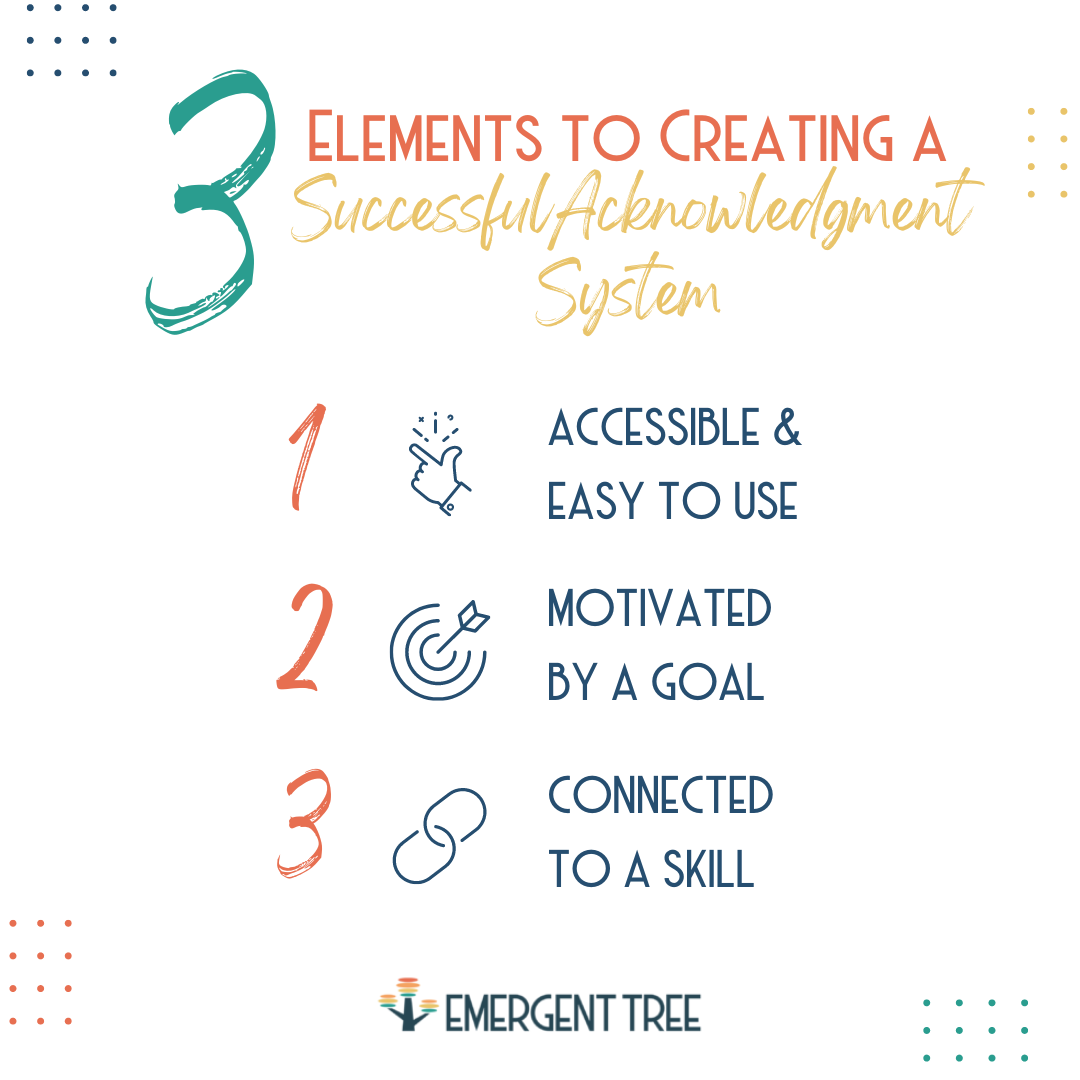As an educator, you already recognize the importance of providing your students with frequent and explicit feedback for academic skills. But do you have a way of giving behavioral feedback to your students in the classroom as well? As you invest in your students, building systems to support positive behavior is critical. It can build skills in your students and allow you to focus on what’s most important in the classroom.
A classroom acknowledgment system helps build an intentional focus for you in providing explicit feedback for the behavioral skills you have taught and want to grow in your students. The goal for this kind of system is to be an element that integrates seamlessly into the rhythm of your classroom and typical daily routines. It’s not a stand-alone tool. It’s not a “point” system or a “reward” system. It’s a feedback tool that systematically supports you and your students.
So how do we go about building this kind of feedback tool? What should an acknowledgment system look like?
Three essential elements make an acknowledgment system successful:
1. Accessible & Easy to Use
After a busy evening, you wake up and are ready to start your day with coffee. Your groggy morning self wanders to the kitchen, and you remember you started storing your coffee maker on the garage’s top shelf. You fumble out to the garage, look up at the shelf, and then decide to drive by your favorite coffee shop on the way to work instead.
This is just crazy, right? We keep our coffee maker in the kitchen to easily access it when we’re not fully awake in the morning and need its goodness. Why on earth would we store it in the garage?
This is the same for your acknowledgment system. It needs to be within reach, a part of your routine, and visible to you and your classroom to remind you to use it daily. If it gets tucked away, it’s likely not to become a habit.
2. Motivated by a Goal
Have you ever set aside savings for a big vacation or something you would consider a significant splurge? Knowing you have a specific amount to set aside for this gives you something specific to work towards. If you plan a special vacation, you will have weeks or even months to save. When you mark that event on your calendar, you can count down the exact number of days to prepare and save. The anticipation is even more exciting the closer you get.
An acknowledgment system with a set goal can motivate individual students, the collective class, and even the teacher. If you set a quantifiable, achievable goal with your class, when the goal is met, you get to celebrate your hard work! Build a system that can be tracked daily, weekly, or monthly. - 100 is a manageable number to start your focus.
3. Connected to a Skill
What skills or behaviors do you want to help teach your students? The goal of an acknowledgment system is to support the behaviors you want your students to internalize and generalize. By receiving an explicit acknowledgment for doing something like raising their hand, pushing in their chair, resolving a conflict, working collaboratively, etc. they will be more intentional about repeating those behaviors regularly.
So, what’s the value? It helps us look for the good things.
As you look at your approach in the classroom, consider aligning with an acknowledgment-to-correction ratio of 3:1. Research has shown that this is an optimal approach to help positively support your students while still providing some corrective feedback.
Keep it simple. Don’t make your acknowledgment system overbearing or a chore for you and your students. Usually, just one tool is a good focus.

Need some inspiration?
Check out what Carver Elementary in Georgetown ISD is doing!
And here’s another example of a classroom’s acknowledgment system.
If you’d like help putting together an acknowledgment system for your school, reach out to us. Our Behavior Coaches would love to support you and your team.



Comments